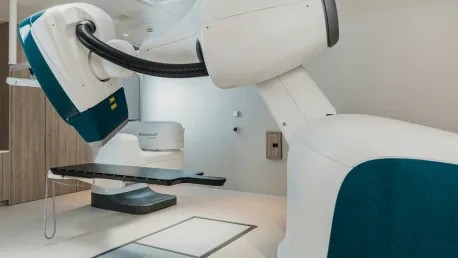Washington, D.C., has recently experienced significant policy reforms that are poised to transform the landscape of nuclear imaging, reflecting a confluence of legislative and regulatory efforts aimed at enhancing diagnostics and treatment options for patients. These reforms come in response to longstanding advocacy by medical societies and aim to ensure financial viability for hospitals, equitable access to advanced imaging technologies, and high standards of patient care.
Improved Reimbursements for High-Cost Radiopharmaceuticals
CMS Decision on Radiopharmaceutical Payments
One significant advancement is the Centers for Medicare and Medicaid Services (CMS) decision to improve reimbursements for high-cost radiopharmaceuticals. Until recently, these crucial diagnostic agents were bundled with other supplies, leading to inadequate compensation for hospitals. This outdated model posed a significant financial challenge for institutions investing in advanced nuclear imaging technologies. CMS’s new policy to cap radiopharmaceutical payments at $630 per day promises to provide better financial viability for hospitals. This crucial change is set to encourage companies to innovate and invest in high-value radiopharmaceuticals, ensuring that patients receive the best diagnostic and therapeutic options available.
This decision followed ten years of relentless advocacy by the Society of Nuclear Medicine and Molecular Imaging (SNMMI), which initially pushed for the Facilitating Innovative Nuclear Diagnostics (FIND) Act. The SNMMI’s persistent lobbying efforts were bolstered by congressional support, ultimately helping to implement this vital policy shift. Hospitals and imaging centers can now confidently expand their nuclear medicine services, providing cutting-edge care without the previous financial constraints. By recognizing the true cost and value of radiopharmaceuticals, this policy ensures that advancements in nuclear imaging will continue to flourish, benefiting both patients and the medical community.
Legislative Focus on Nuclear Imaging and Screening
The Find It Early Act
Another legislative focus is the Find It Early Act, designed to eliminate out-of-pocket costs for supplemental breast cancer screening, including specialized nuclear imaging techniques like PET and SPECT scans. This measure is particularly beneficial for women with dense breast tissue, for whom conventional mammography may not always be sufficient. By removing the financial burden of additional screening, the act aims to ensure that all women have access to tailored and effective diagnostic options. Ensuring financial relief from additional screening costs is essential, not only for individual patient outcomes but also for broader public health objectives.
Specialized nuclear imaging can significantly improve early detection rates, enabling more effective and less invasive treatment options. The Find It Early Act represents a concerted effort to provide equitable access to advanced imaging technologies, which can be life-saving for many women. Furthermore, the act underscores a broader commitment to addressing healthcare disparities and ensuring that financial barriers do not impede access to essential diagnostic services. By mandating insurance coverage for these critical screenings, the act supports a preventative approach to healthcare, ultimately seeking to reduce breast cancer mortality rates and improve patient outcomes nationwide.
Preserving Licensure Standards and Collaborative Efforts
SNMMI is also committed to preserving the licensure standards for nuclear medicine technologists, ensuring the delivery of high-quality patient care. Maintaining rigorous certification and training requirements is essential in a field that relies heavily on precision and technological expertise. The SNMMI’s advocacy extends to collaborating with various entities, including the Department of Defense, to incorporate nuclear medicine in medical research. This collaboration is particularly focused on exploring advancements in treating complex conditions such as neuroendocrine tumors, where nuclear imaging plays a critical role.
By safeguarding stringent licensure standards, SNMMI ensures that the professionals operating nuclear imaging equipment possess the necessary qualifications and expertise. This commitment to excellence is crucial for patient safety and the accuracy of diagnostic results. In addition, collaboration with the Department of Defense highlights the potential for nuclear imaging to contribute to groundbreaking medical research, advancing treatment options for challenging medical conditions. This integrated approach reinforces the importance of nuclear medicine in both clinical practice and research environments, driving innovation while upholding the highest standards of patient care.
Potential Reforms and Funding Concerns
National Institutes of Health and NIBIB Funding
Amid possible reforms to the National Institutes of Health (NIH), SNMMI has expressed concerns about potential funding reductions for imaging research through the National Institute of Biomedical Imaging and Bioengineering (NIBIB). The fear is that losing the NIBIB as a dedicated funding source will significantly reduce financial support for developing new imaging agents and hinder innovation in nuclear imaging. This possibility raises alarms within the medical imaging community, as continued research and development are vital for advancing diagnostic and treatment capabilities.
Losing crucial funding for imaging research could stall progress and limit the availability of new and innovative nuclear imaging technologies. Sustained investment in research is necessary to address emerging health challenges and to develop sophisticated diagnostic tools and therapies. SNMMI’s concerns underscore the importance of maintaining robust financial support for imaging research from the NIH, as any reductions could have long-lasting impacts on the field. Ensuring that NIBIB continues to receive adequate funding is critical for promoting ongoing advancements in nuclear imaging and for health equities within the healthcare system.
Impact of Medicare Physician Fee Cuts
Washington, D.C., has recently undergone major policy reforms expected to revolutionize the field of nuclear imaging. These changes are the result of coordinated legislative and regulatory efforts designed to improve diagnostic and treatment options for patients. Spurred by years of advocacy from medical societies, these reforms focus on ensuring hospitals remain financially viable, provide equitable access to cutting-edge imaging technologies, and uphold high standards of patient care.
The key goals include making advanced imaging more accessible, particularly to underserved communities. By addressing financial hurdles and updating reimbursement models, hospitals can now invest more easily in state-of-the-art equipment. These policy changes also encourage streamlined regulatory processes, which could lead to quicker approval and deployment of new imaging innovations. This suite of reforms represents a significant step toward enhancing the overall quality of healthcare, ensuring patients receive the best possible diagnostic and treatment options.









